Nordisk Sed. Norse Heathenry. Forn Sed. Scandinavian Folklore.
Don't wanna be here? Send us removal request.
Text








“The Glittering North”
Raby Castle, Northern England
Celebrating the region’s Norse and Viking heritage in a raucous adventure like no other, the event brings to life iconic figures from the past with enchanting puppetry and illuminating light art.
29 notes
·
View notes
Text



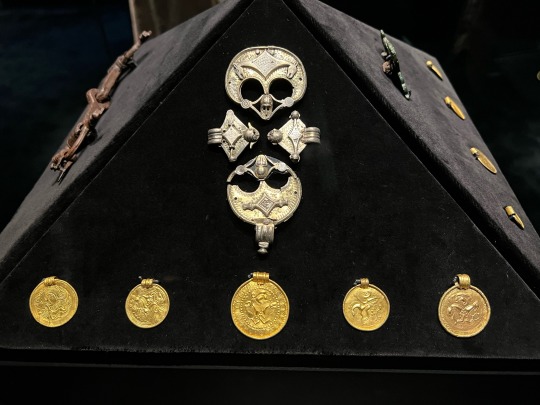
Kulturhistorisk museum in Oslo hosted an exhibit named “Fabulous Animals”, exploring the connection between humans and animals in the period from the Iron Age to the Viking Age, through archaeological finds.



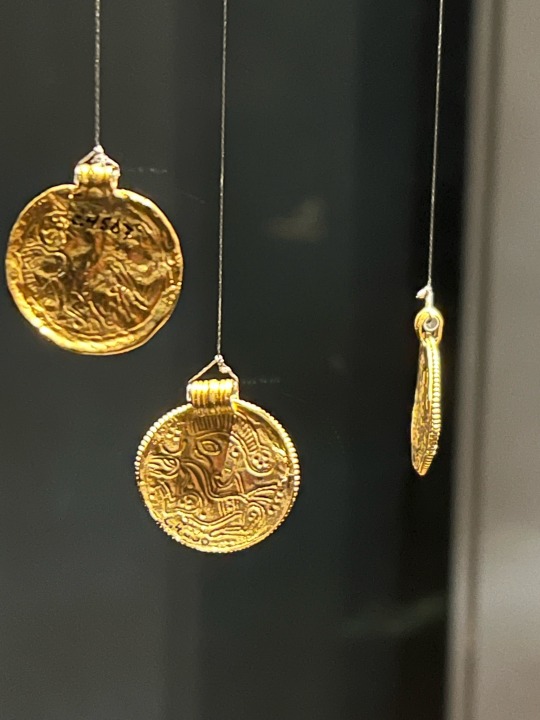


I hope you will enjoy some photographs of some of the exhibits.
Til års og fred
#asatru#norse mythology#heathen#pagan#norse heathen#forn sed#vikings#viking#norse pagan#forn sidr#nordisk sed#norse#åsatro#forn siðr#hedendom#odin#ásatrú#norse gods
216 notes
·
View notes
Text
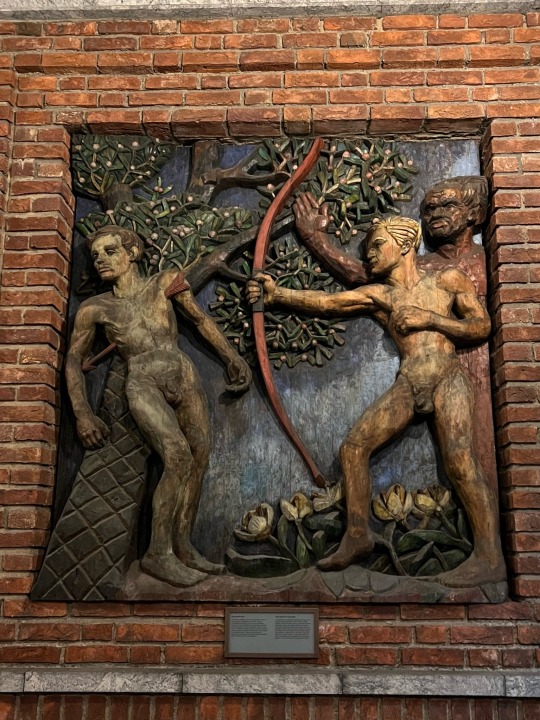
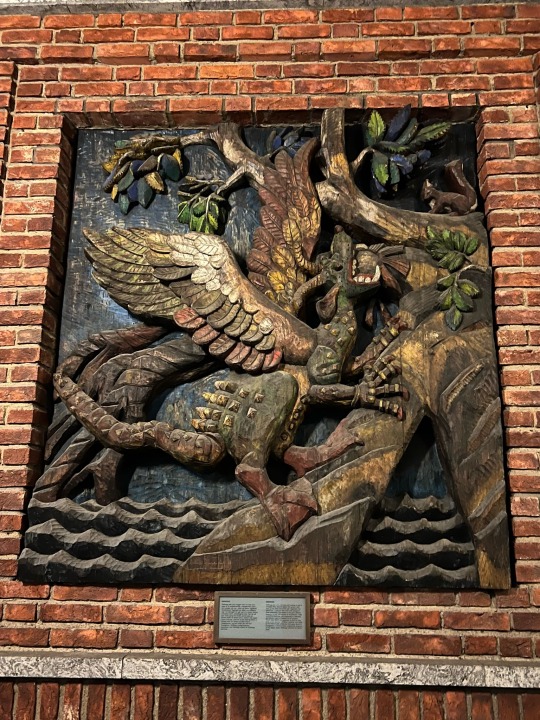
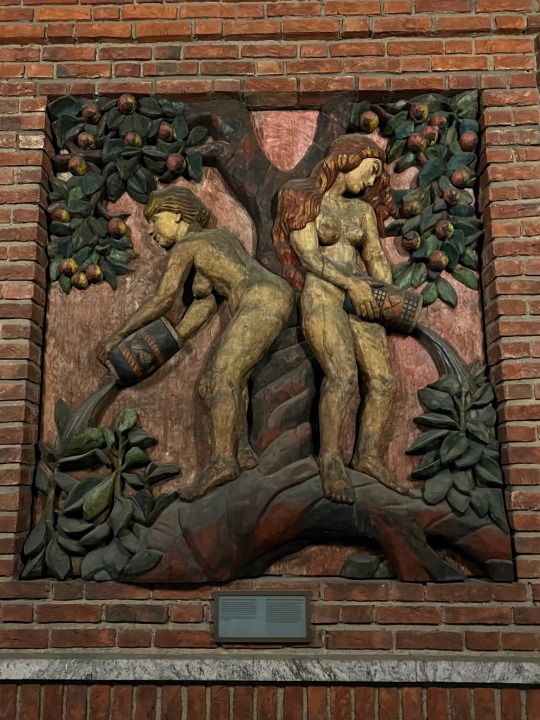
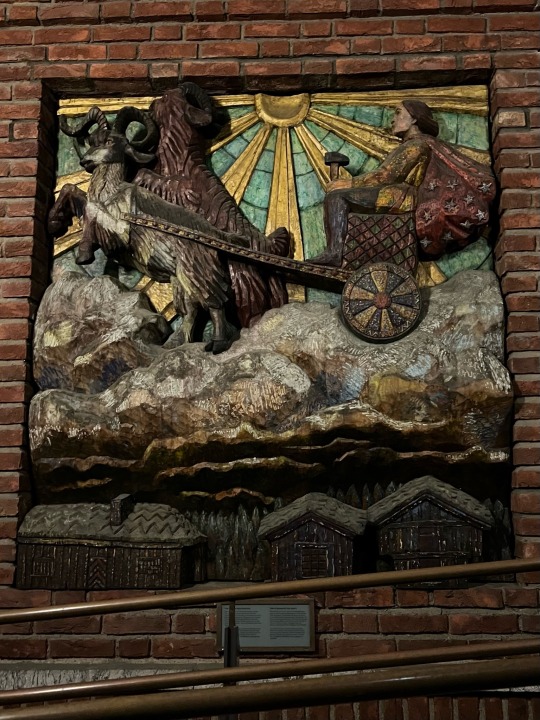

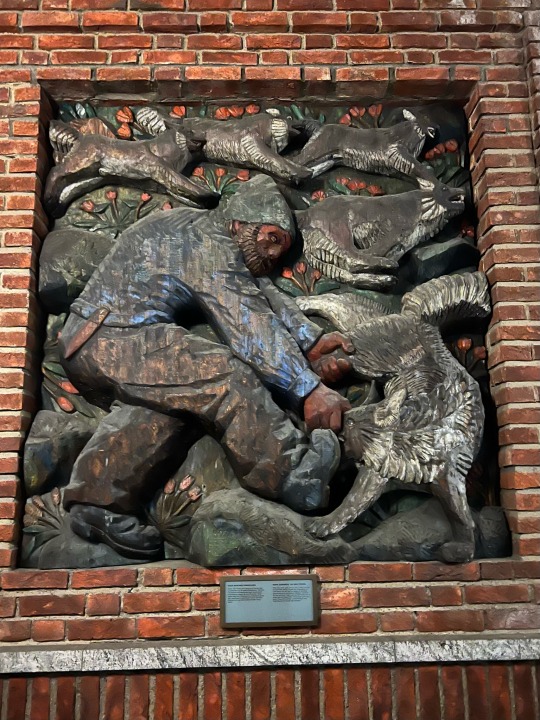
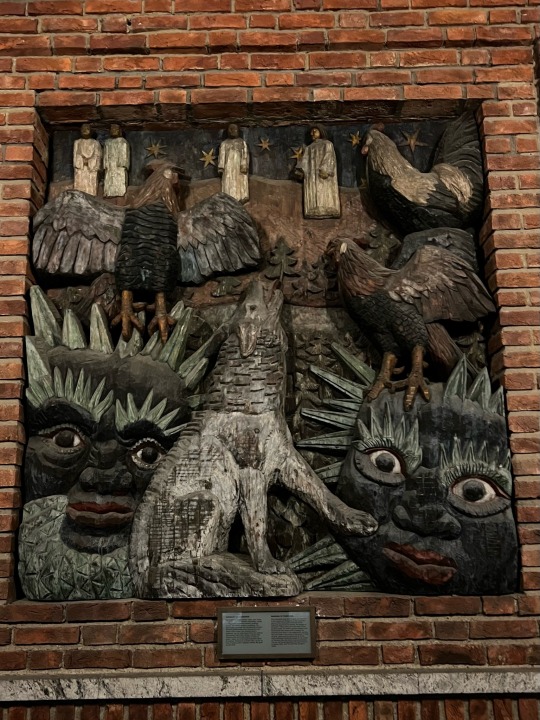

Oslo rådhus (Oslo city hall) features reliefs by Dagfin Werenskiold that are multicoloured depictions of events from the Poetic Edda.
I thought I’d take some pictures to share with you all. Here are eight from the sixteen total.
Can you guess them all?
#asatru#norse mythology#heathen#pagan#norse heathen#hedendom#nordisk sed#forn sed#scandinavian folklore#forn sidr#Oslo#Oslo rådhus#oslonorway
290 notes
·
View notes
Text
“Heathenism is, that men worship idols; that is, that they worship heathen gods, and the sun or the moon, fire or rivers, water-wells or stones, or forest trees of any kind; or love witchcraft, or promote ‘morth’-work in any wise; or by ‘blot,’ or by ‘fyrht;’ or perform any thing pertaining to such illusions.”
This excerpt from The Law Codes Of King Cnut, written by Archbishop Wulfstan (on behalf of King Cnut) in approximately 1020, serves as a fantastic outline for exactly what constituted “heathen” practices, from the time at which they were trying to ban such practices.
Thorpe Translation, Winchester Laws Volume 1, p.162
#asatru#heathen#pagan#norse heathen#forn sed#viking#norse pagan#forn sidr#nordisk sed#norse paganism#norse heathenry#norse practices#norsereligion#ásatrú#åsatro
284 notes
·
View notes
Text

Whispers Of Yggdrasil
Robin Hoods Bay, England (5/2/21)
#asatru#forn sed#forn sidr#nordisk sed#åsatro#forn siðr#ásatrú#yggdrasil#norse myth#norse#norse paganism#norse mythology#mine#my picture#photography#unedited#hedendom#heathen#pagan#norse heathen#whitby#robin hoods bay#yorkshire
382 notes
·
View notes
Text
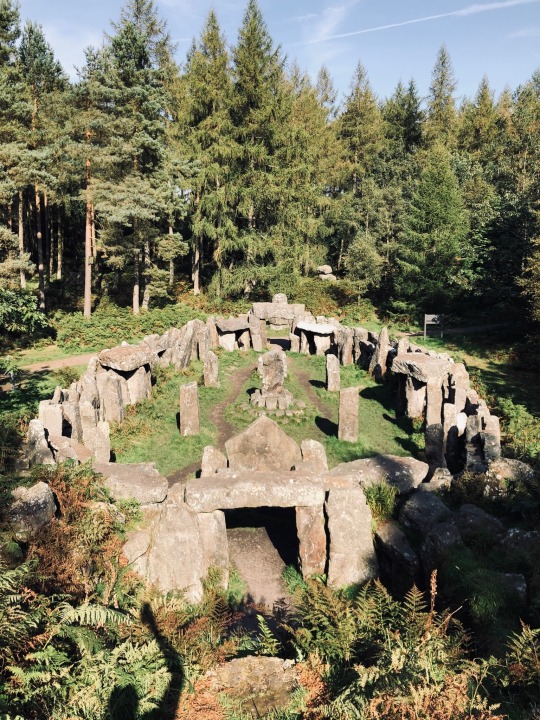
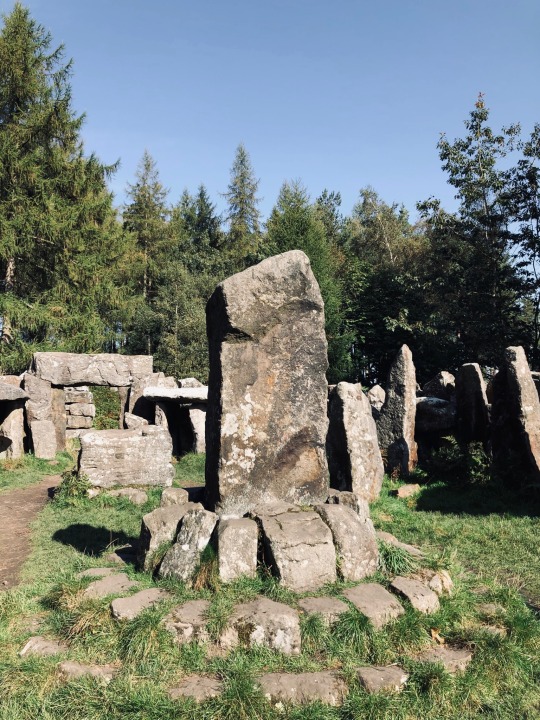



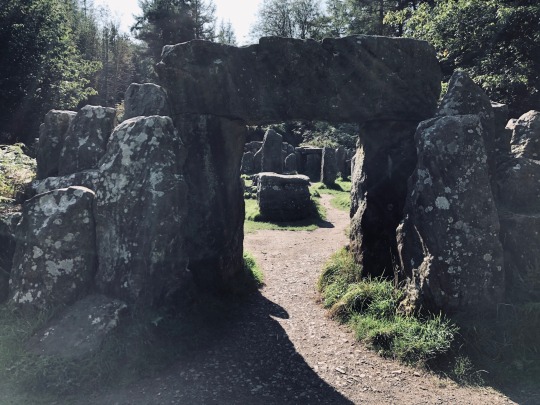
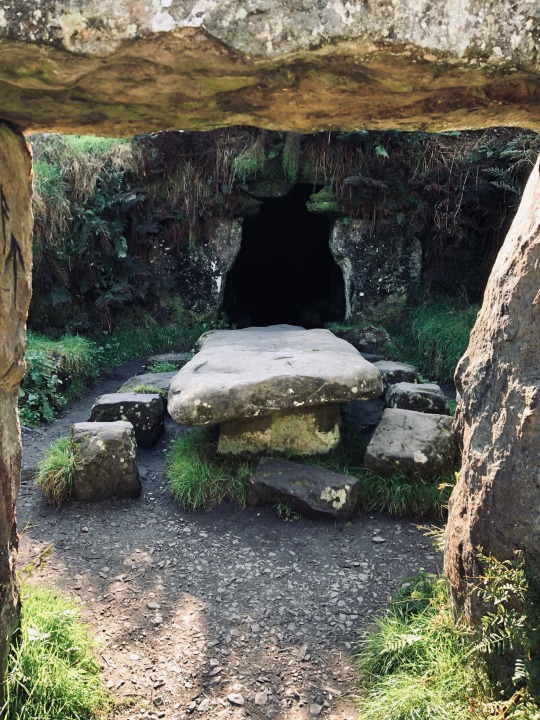
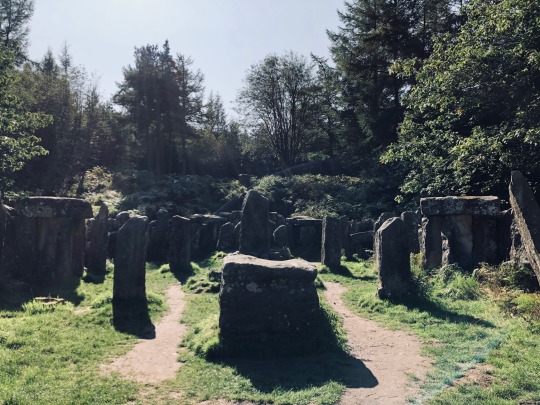

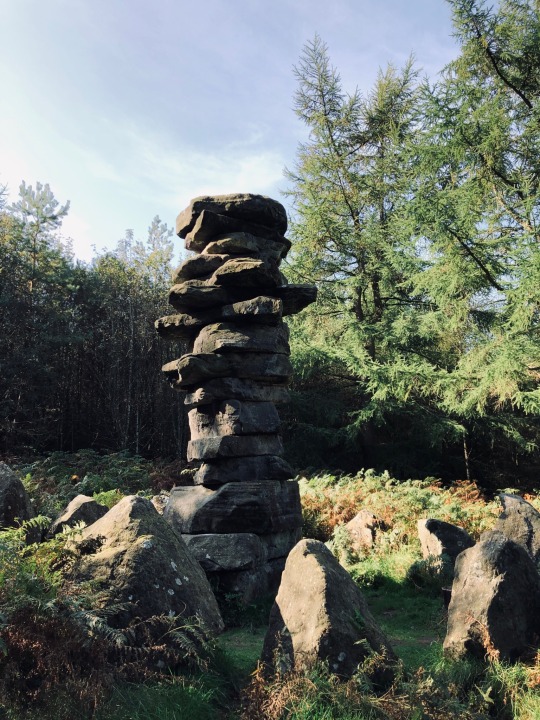
A beautiful day to explore the Druids Temple, Yorkshire (England)
Photographs ©️hedendom
#druids temple#pagan druid#druid#temple#hof#horg#horgr#steinsetting#forn sed#norse heathen#norse pagan#folketro#forn sidr#stone temple#standing stones#stone circle
2K notes
·
View notes
Photo


St. Olav - An Echo Of Thor?
A red bearded warrior, hunting trolls with his axe on his travels does not require us to make a huge leap of imagination in order to note similarities with the norse god Thor. However, there is far more to the comparison that St. Olav may have been used to reimagine pre-Christian beliefs surrounding Thor if we look a little deeper...
Following Christianisation in Northern Europe, many Scandinavians kept their heathen beliefs alive through syncretism with Christianity. A strong case can be made for this practice being evident with the Catholic saint and former king of Norway, Olav Haraldsson, celebrated each year on 29th July.
In Scandinavia, from long ago through until more recent times, St. Olav’s day was the day when the people would pray for thunder (named directly from Thor) and (as they referred to it) “the rain of the Æser” to prepare the crop for harvest, which they so eagerly awaited to come to fruition at this time of year.
St. Olav, like Thor, could control trolls and giants, according to legend. When he travelled around Norway on his Christening mission, the trolls often tried to block the way for him. He then used his power to turn them to stone, as if he was the sun, using a cross instead of Thor’s hammer, mjølner
One story, from the area of Ringerike, tells us that when St. Olav tried to pass a place called Krokkleiva, an angry giantess jumped out of the mountainside and said: “Saint Olaf with the red beard, you are riding too close to my cellar wall!” But St. Olaf replied: “Stand you there in wood and stone until I return!” Whereupon the giantess was turned into stone. Similar stories are told about various landscape features throughout Norway. People also saw other traces of St. Olaf in the landscape, such as footprints of his horse. A stone in Setesdal is said to be his chair, two rocks near Stiklestad are his bowl and cup, etc...
Another famous landmark is The Well Of St. Olav at Karmøy: “The legend claims that King Olaf was followed by enemies through the strait Karmsund. He sailed his ship to the western side of the island. From here the King and his men started to drag the ship over land from Torvastad to Vikingstad.The hard work made them thirsty and the King stabbed his clenched fist in the rock. Immediately it came roaring up clear water so everyone could drink.” Most interesting about St. Olav’s Well is that it is located in Torvastad and just a few hundred meters to the west we find Hovland. As the name suggests, it was likely to have been a pagan hov (temple). We know that water played a major role in Norse mythology, and perhaps the water in St. Olav’s well also had a sacred function in Pre-Christian times. In Viking times, before the conversion to Christianity (and after it, too), people in Norway believed in different supernatural beings living in the landscape. Landscape features could also be made by them, such as mountains being petrified trolls, or a ravine being the axe blow of a giant. With these stories about St. Olav, this way of thinking and explaining the landscape takes on a Christian mask, yet it is still fundamentally a continuation of traditional beliefs.
#Forn Sed#Forn Sidr#Forn Siðr#Nordisk Sed#Folketro#folklore#folk tales#scandinavian folklore#scandinavian folk belief#syncretism#st olav#olav haraldsson#asatru#ásatrú#åsatro#thor#tor#norse gods#norse heathenry
362 notes
·
View notes
Text

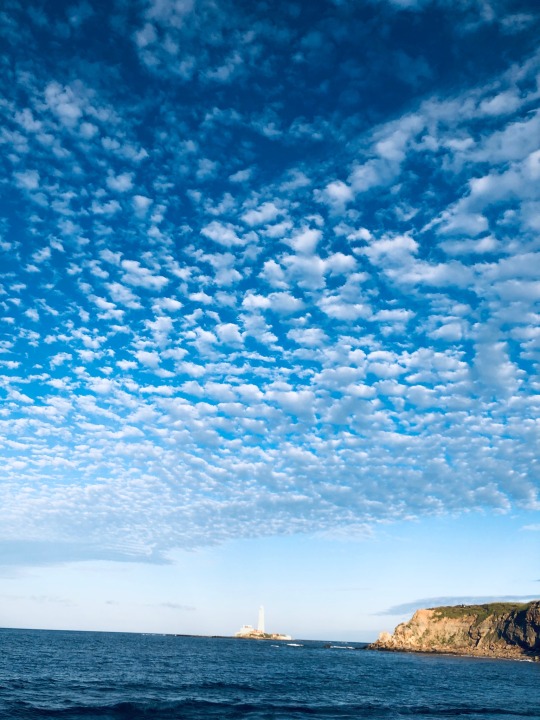
Hil Njord!
Hil Æge!
Hil Rån!
Hil ni døtre av hav!
Pictures are my own (see if you can match my stone pile)
#asatru#norse mythology#norse heathen#forn sed#norse pagan#folketro#forn sidr#nordisk sed#norse#ásatrú#åsatro#norse heathenry#heathenry#heathenism#norse heathenism#njord#njordr#ægir#æge#aegir#rán#rån#ni døtre av hav#nine wave daughters#vanir#vaner#venerate
232 notes
·
View notes
Text
Sommersolverv

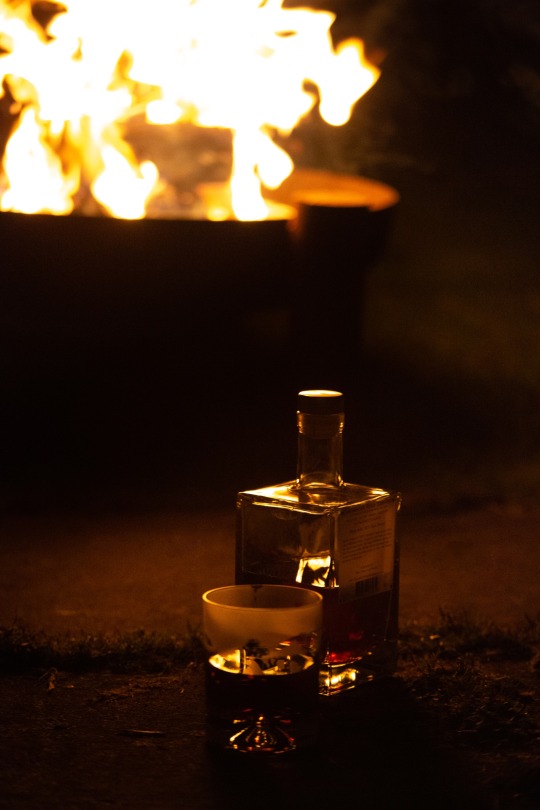



The longest day, the shortest night, Natt is in absence,
The shortest darkness, the longest light,
Dag rules this sky,
Sol enlightens a world more bright,
Just as the embers of the midsommar fire,
Until the sun rises, they must stay alight, Make haste, the days move quickly now, Jord grows stronger now,
And Balder’s brightness shining through,
As Hod stirs from his deepest sleep,
Anticipating the falling leaves,
For one more year, give thanks, Sol ascends tonight.
Images and poem by @hedendom
#asatru#norse mythology#norse heathen#forn sed#viking#norse pagan#folketro#forn sidr#nordisk sed#norse#åsatro#ásatrú#norse gods#norse paganism#norse myth#norse folklore#nordic folk belief#scandinavian folk belief#heathen#pagan#hedendom
333 notes
·
View notes
Text
Thunderstones
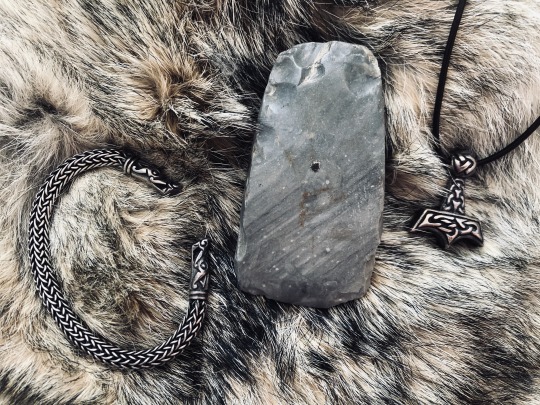
A Scandinavian/Nordic folk belief pre-dating the Viking Age, a tordenstein (in Norwegian), known as a ‘thunderstone’ in English and ‘dynestein’ in Old Norse, refer to recovered Stone Age flint axes/tools (usually dug up from the earth after many years beneath the surface) used as talismans, protective amulets and sacred objects in heathenry. Believed to have been hurled to earth by Thor, within lightning bolts during thunderstorms, as weapons to destroy trolls, alver (elves) and other malevolent vetter (mystical or spirit creatures), to protect the world from chaotic forces. This ancient tradition is one of the longest continuously running and most widely spread customs in human history, practiced for many thousands of years across many cultures, in various different ways.

When thunderstones were first excavated from Viking Age graves, they were initially dismissed as accidental additions because they were dated as much as 5000 years before the burial. As more evidence emerged and more examples were excavated (including one in an untouched, sealed stone coffin), it was soon understood that these thunderstones held significant importance. Some unearthed examples were even carried to Iceland all the way from Norway by treacherous sea voyage! It is believed that they protected houses and people, along with protecting the hamingja (”luck”).

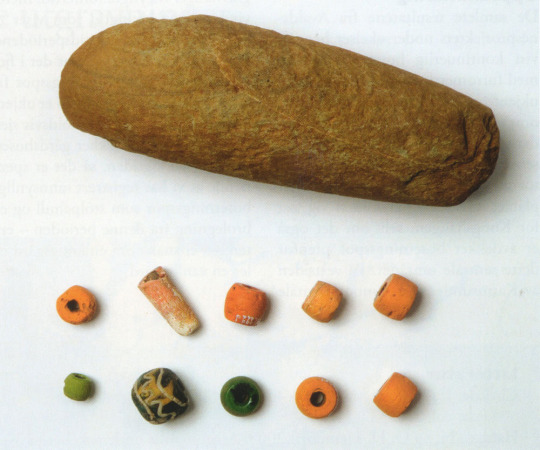
To the Vikings, there were three essential properties for a thunderstone, according to Olle Hemdorff, an archeologist from the University Of Stavanger, Norway and expert on the topic:
“The form had to be similar to an ax or a hammer—that is, a ground stone or flint. The stone had to have 'flaming' properties, which flint and quartz have. And all the stones were damaged with the edge chipped off—'proof' that they fell from the sky.”
In Scandinavian folklore, thunderstones are seen as potent magical artefacts and anyone lucky enough to dig one up possesses a very powerful charm. Often worshipped as famial or ancestral deities/powers, they are said to protect against spells and witchcraft, if kept on the person. Similarly, if placed within the wall of a home, they will bring good luck, prevent lightning from striking and protect against bad magic. When used within a sacrificial blot ceremony, the thunderstone would be venerated with an offering of beer, poured over the stone, or anointed with butter.
Photographs:
My own tordenstein.
Lightning shower (CNN, 2014).
Artistic recreation of Viking Age woman with tordenstein in excavated in Kongshaugen, Norway.
Photograph of the Stone Age greenstone axehead and grave goods found buried with the Viking Age woman (as above)
#vikings#viking age#viking funeral#torestein#thunderstones#dynestein#thor#Thors hammer#ancestor worship#tor#Forn Sed#Forn Siðr#Forn Sidr#Nordisk Sed#nordic folklore#scandinavian folklore#scandinavian folk belief#trolls#elves#vetter#vættir#asatru#ásatrú#åsatro#Folketro
2K notes
·
View notes
Text
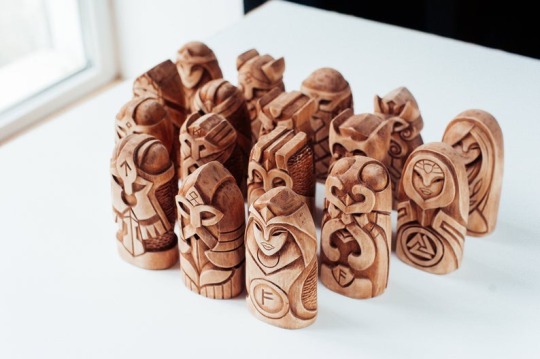
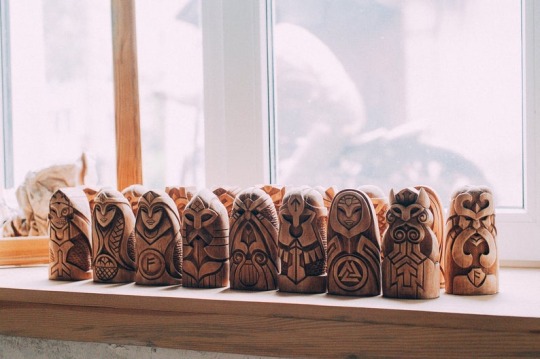




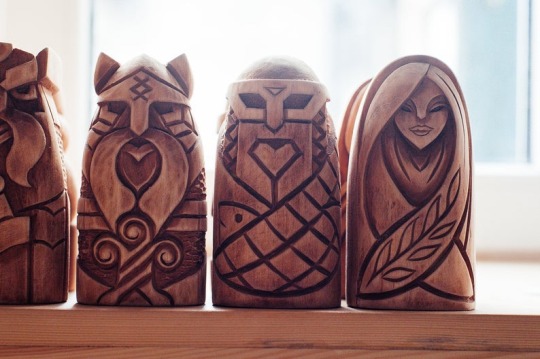
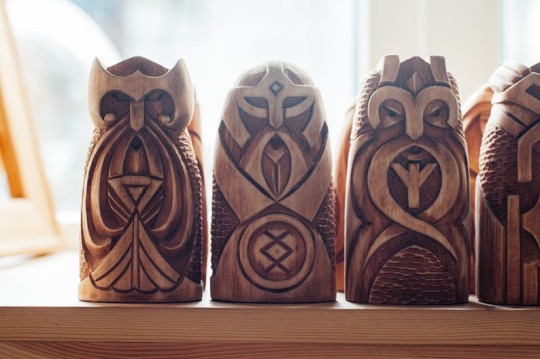
Gorgeous wooden Norse god figurines carved from linwood with runic inscriptions by Triumpho
#norse mythology#norse gods#asatru#ásatrú#åsatro#Runes#viking crafts#vikings#odin#thor#freyja#frigg#magni#tyr#heimdall#hel#loki#bragi#Idunn#Freyr#baldur#bor#Njordr#aegir#eir
6K notes
·
View notes
Text


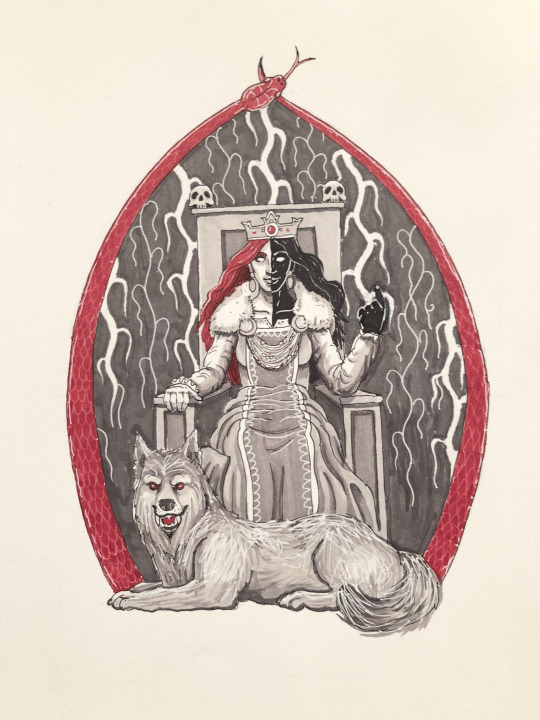
Odin, Freyja and Hel drawn as part of a mythology themed inktober by Arkham 13
#odin#freyja#frøya#oðinn#hel#asatru#norse mythology#heathen#pagan#norse heathen#forn sed#norse pagan#ásatrú#åsatro#norse myth#forn sidr#forn siðr
537 notes
·
View notes
Text


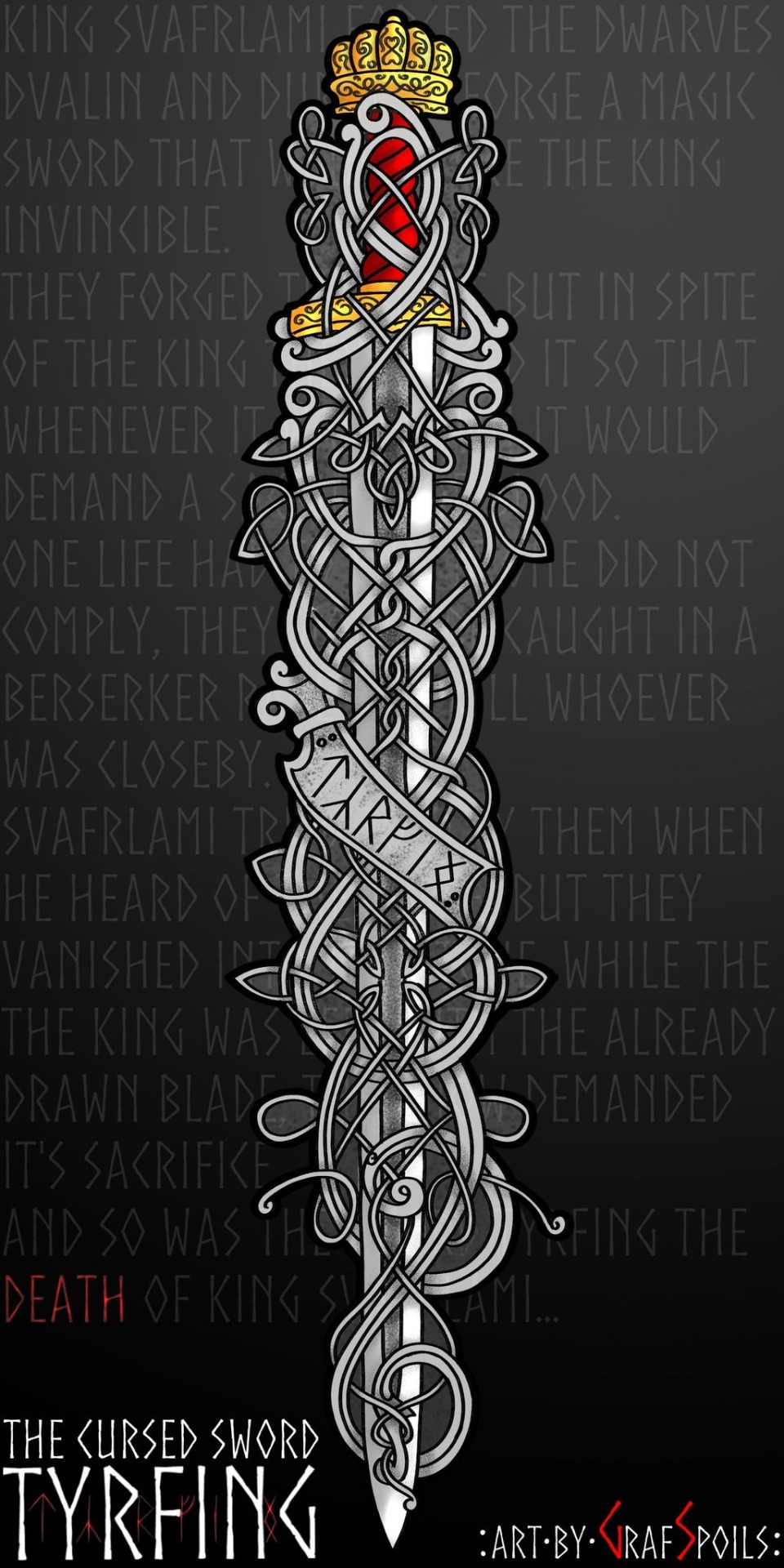

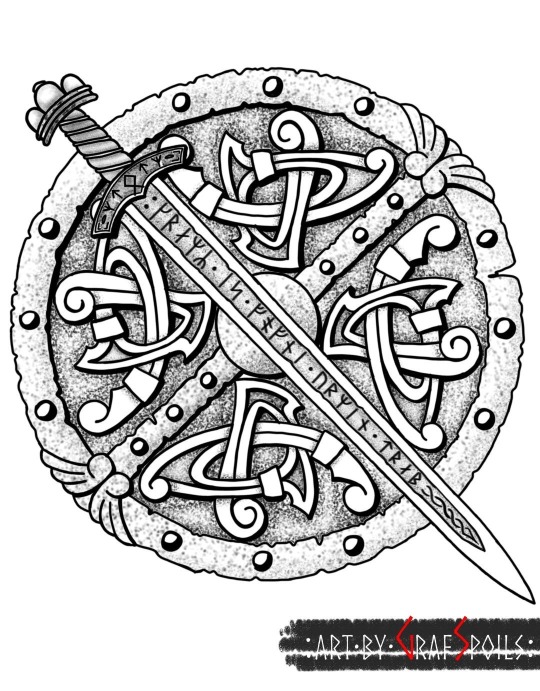
“Loke’s Offspring”
“Mjölnir - Hammer Of Thor”
“Tyrfing- The Cursed Sword”
“Fenrir - Odin’s Bane”
“Gramr - The Sword Of Sigurd, The Dragonslayer”
Artwork by GrafSpoils
#asatru#norse mythology#heathen#pagan#norse heathen#forn sed#vikings#viking#norse pagan#loki#fenrir#hel#gramr#tyrfing#mjølner#mjollnir#mjolnir#mjölnir#norse art#norse gods#norse myth#forn sidr
637 notes
·
View notes
Photo


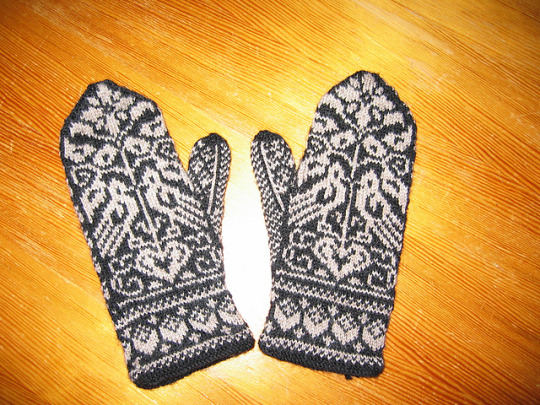

Vinternettene - Winternights
October 14th
It is customary that every year at sundown on 14th October, heathens will celebrate vinternettene (winternights), also known as høstblot (autumn blot), vinterdag (winter day) or vinternatt (winter night).
14th October was the day that Scandinavians would turn over their primstav to mark the beginning of the winter half of the year and welcome the cold weather returning, a tradition that pre-dates Christianity in Scandinavia. Marked with the symbol of a mitten (as it was customary to knit new mittens for the coming cold weather), it is also said that the weather on vinternettene will be a signal of the weather for the coming winter.
The sacrificial blot accompanying this was usually dedicated to Frøy (Freyr), alver (elves) and the diser (disir). Asking that Frøy will return swiftly to sow the seeds of rebirth and that we make it safely through the coming cold and snow.
Til års og fred!
#winternights#winter nights#vinternettene#vinternatt#vinterdag#heathen holiday#blot#haustblot#høstblot#primstav#hedensk högtider#asatru#ásatrú#åsatro#Forn Sed#Forn Sidr#Forn Siðr#Folketro#Nordisk Sed#nordisk hedendom#Hedendom#norse heathen altar#norse heathen#norse heathenry#norse paganism#horgr#horg#heathen horg
591 notes
·
View notes
Photo
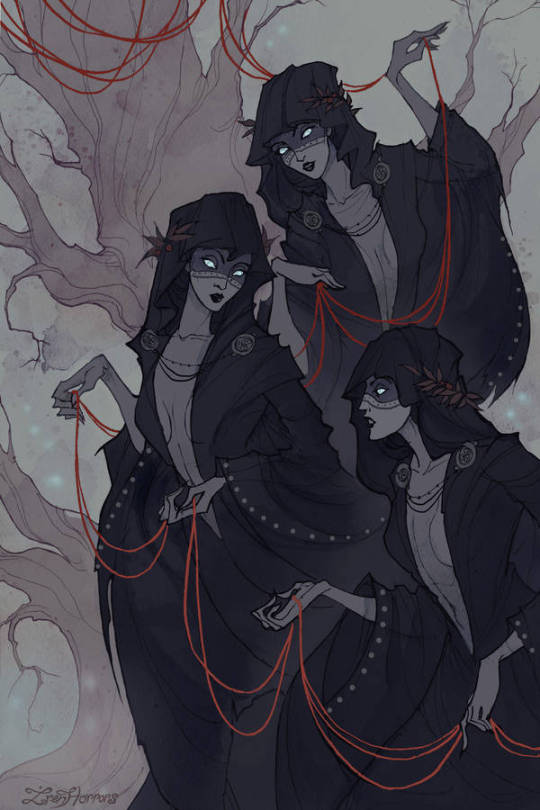
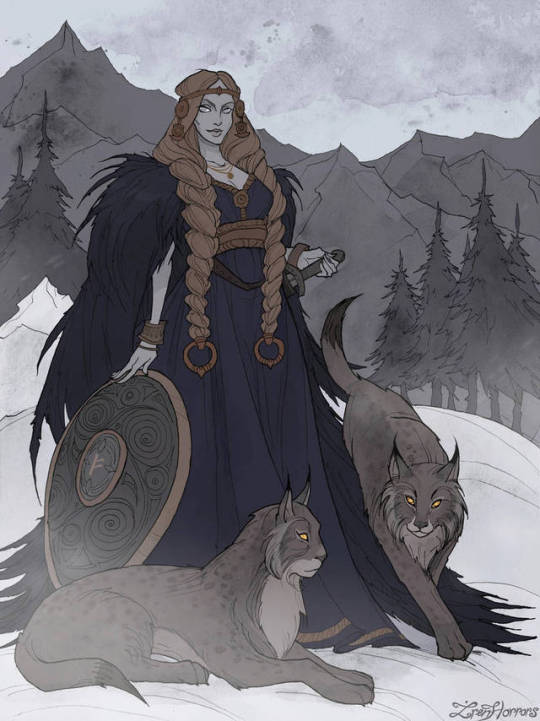
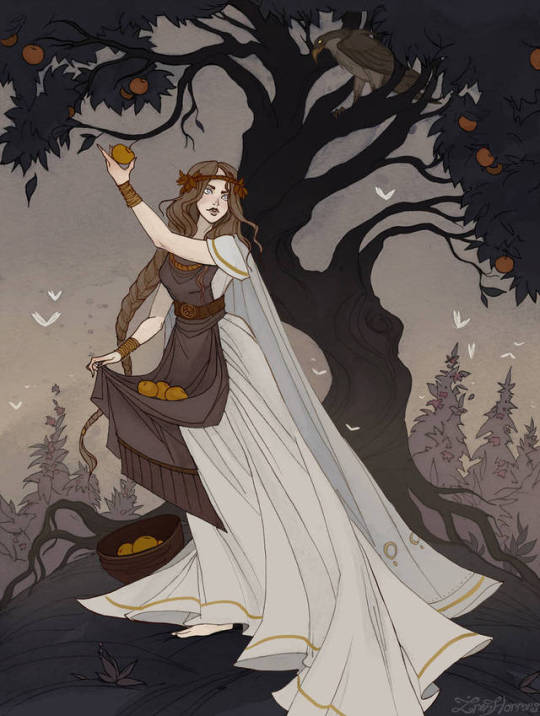
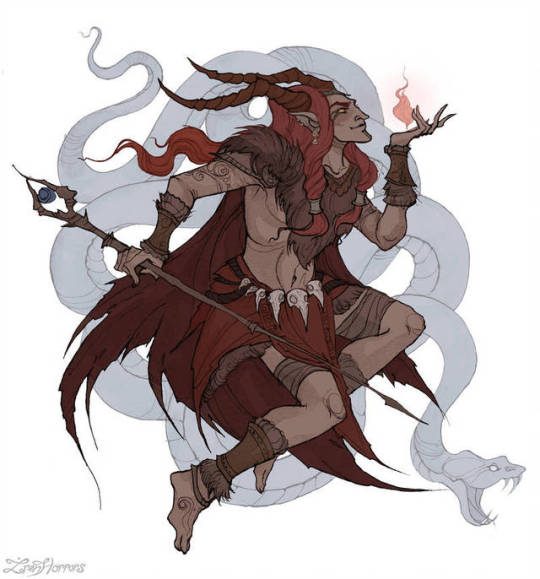
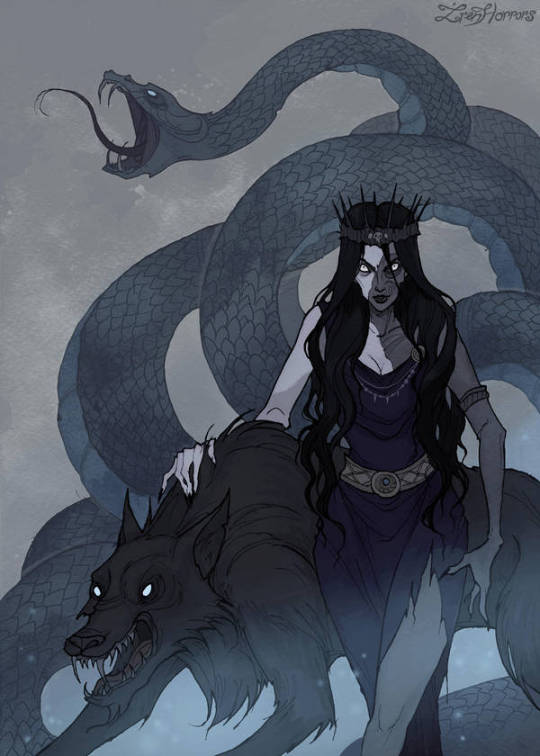
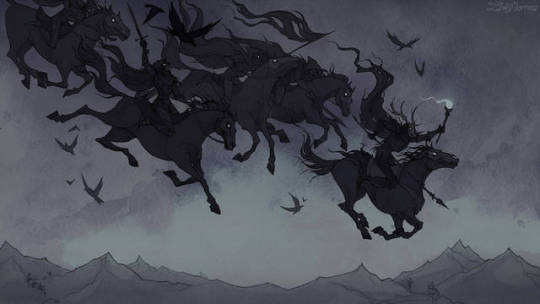
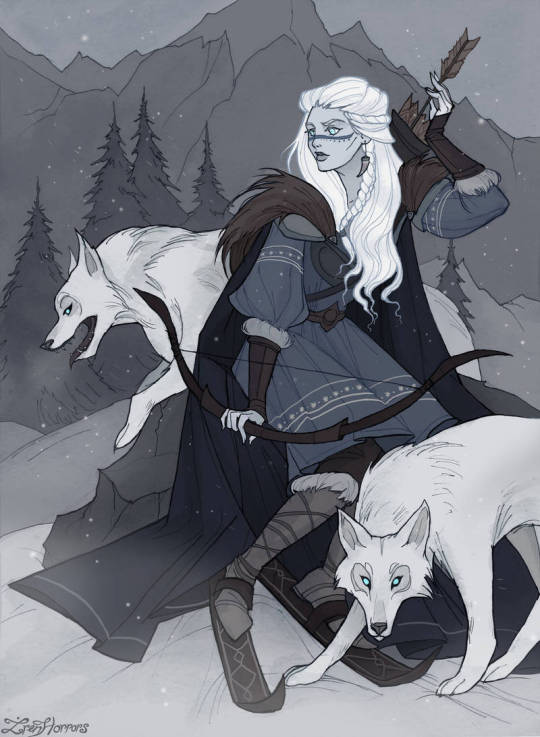
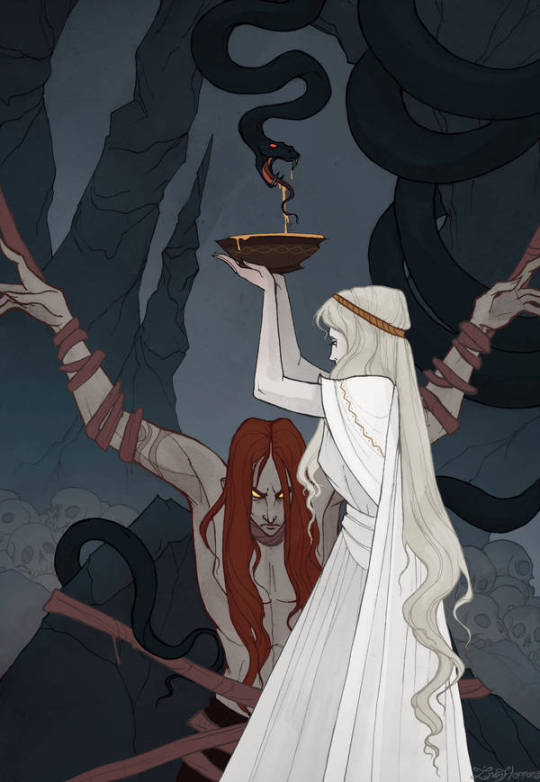
Ksenia Svincova has created some dark and fantastical artwork inspired by Norse Mythology.
Featured here: The Norns Freyja Idunn Loki Loki’s Children The Wild Hunt Skadi The Punishment Of Loki
#norse#norse myth#norse mythology#norse gods#norse heathen#hedendom#asatru#ásatrú#åsatro#folketro#norse heathenry#norse paganism#norse pagan#norns#the norns#nornir#norner#Freya#freyja#frøya#Idunn#idunna#iðunn#loki#loke#lokean#loki laufeyson#Jormungandr#midgardsormr#midgard serpent
14K notes
·
View notes
Photo


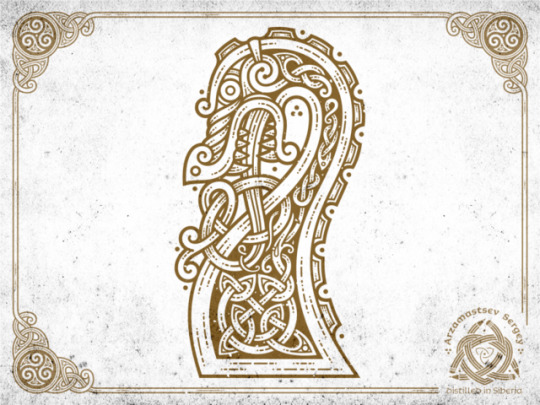
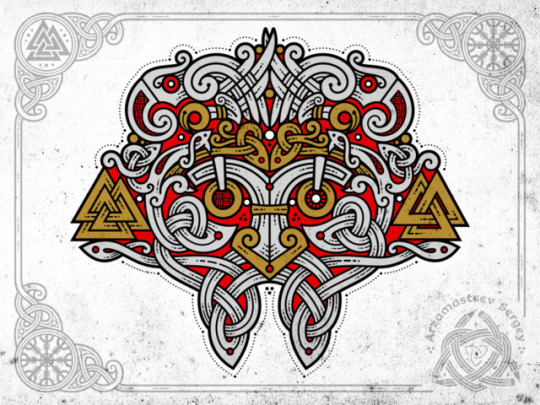
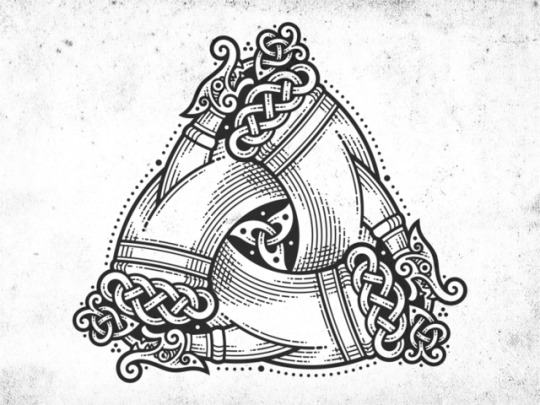




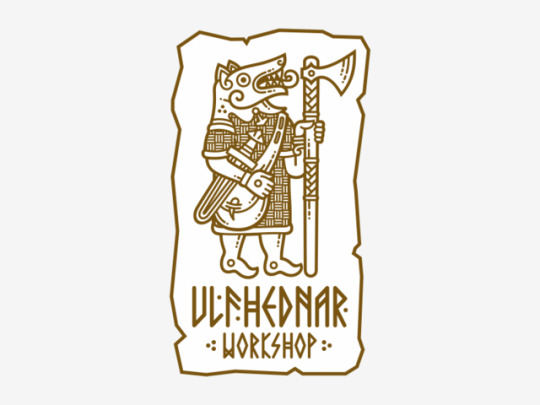
Beautiful Viking inspired designs from Sergey Arzamastsev
#odin#spear#shield#shield wall#ulfhednar#drinking horn#Viking axe#Fenrir#Fenrisulfr#drakkar#viking drakkar#death mask#knotwork#viking knotwork#viking art#vikings#viking age
560 notes
·
View notes
Photo


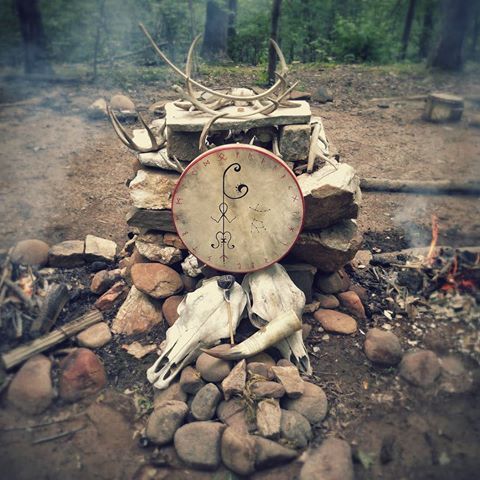
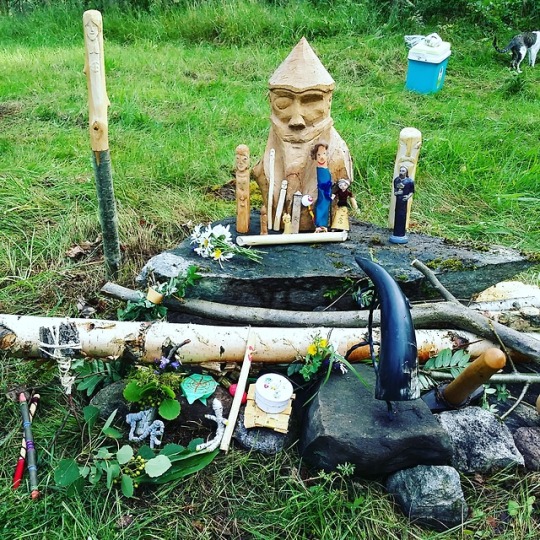
Horg
“þeir er hǫrg ok hof hátimbroðo” “Shrines and temples they timbered high” - Völuspá
A horg (Old Norse “hǫrgr”) is a sacrificial site or a form of altar in pre-Christian times in the Nordic countries and which roughly refers to a "stone pile".
In the poem Hyndluljóð, the goddess Frøya (Freyja) speaks favorably of Ottar (Óttar) for having worshiped her so faithfully by using a horg. Frøya details that the horg is constructed of a heap of stones and that Ottar often reddened these stones with sacrificial blood in dedication to her. Snorre Sturlason states that the horg is used in the veneration of the Åsynjene (female gods).
In the poem Vafþrúðnismál, it is also stated that many a horg and hov were dedicated to Njord (Njörðr).
A horg is considered different to a hov (from the Old Norse hof), commonly called a “temple”. A rough simplification is that horg were for outdoor rituals and hov for indoors worship.
Many modern day heathens within Scandinavia continue to use a stone set as a focal point for rituals conducted outdoors to this day.
#horg#horgr#hov#hof#asatru#ásatrú#åsatro#Forn Sed#Forn Sidr#Forn Siðr#Nordisk Sed#norse heathenry#norse paganism#frøya#freyja#odin#njord#njörðr#temple#shrine#norse heathen altar#Pagan Altar
3K notes
·
View notes